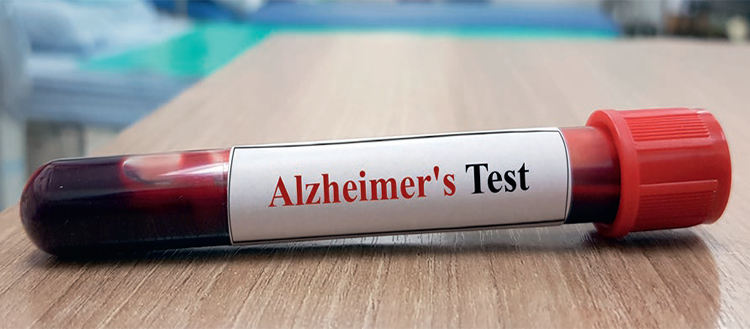An international team led by the UNIGE and the HUG shows that certain blood biomarkers could facilitate the diagnosis of Alzheimer's disease.

Blood biomarkers can be detected by a simple blood test in a doctor's office, hospital or laboratory. © Shutterstock
An international research team led by the UNIGE and the HUG has shown that amyloid and tau blood-based biomarkers are highly correlated with the corresponding biomarkers used so far for the diagnosis of Alzheimer's disease. Furthermore, the blood-based biomarkers showed high diagnostic accuracy in discriminating the normal or non-normal status of the amyloid and tau biomarkers. Blood-based biomarkers are significantly less invasive and expensive than traditional biomarkers and could greatly simplify the diagnostic process for Alzheimer's disease by reducing costs and reducing the number of tests required by up to 49%.They could improve early detection and monitoring of the disease progression. A study to read in the Journal of Neurology Neurosurgery and Psychiatry.
Today, Alzheimer's disease is diagnosed using biomarkers that require expensive techniques, such as positron emission tomography (PET) and tau-PET, invasive, such as lumbar punctures to collect cerebrospinal fluid and p-tau, or not very accurate, such as measuring brain atrophy by MRI.
Blood-based biomarkers have the benefit of being detectable by a simple blood test in a doctor's office, hospital or laboratory and can be combined with other markers as part of routine health monitoring. Currently, they are only used for research purposes. Clinical use cannot be expected until technical details, such as normality/anormality thresholds and the standards to be applied by the various laboratories, are established. However, this could soon become a reality, which would have the advantage of involving attending physicians from the first stage of diagnosis and ensuring that the costs are covered by health insurance companies.
As Prof. Giovanni Frisoni, head of the study, director of the HUG Memory Centre and full professor in the Department of Rehabilitation and Geriatrics at the UNIGE Faculty of Medicine, points out, 'the use of blood-based biomarkers in the general practitioner's office, for example, would considerably reduce the number of diagnostic examinations, generate significant savings and improve outcomes'.
More refined testing technique
The study presented here follows the commissioning of the new high-precision machine acquired in June 2022 by the HUG Memory Centre. The machine detects the abnormal concentration of proteins specific to Alzheimer's disease using an immunofluorescence assay technique that is more sensitive than standard assay techniques, and also aims to map people who are at high risk of developing the disease more accurately.
The study is based on 200 patients of the HUG Memory Centre, including 82 patients without cognitive disorders, 99 with mild cognitive impairment and 19 with dementia .The researchers had plasma biomarkers and at least one traditional biomarker collected from each patient within 12 months.
Advantages and disadvantages of the different techniques
Neuroimaging techniques allow direct, visual measurement of AD biomarkers and provide valuable information on their topography, but their information is limited to individual biomarkers (amyloid, tau or neurodegeneration). They are more expensive and may involve small amounts of radiation.
Cerebrospinal fluid analysis by lumbar puncture is less expensive and more accessible. It provides information on several biomarkers of the Alzheimer's disease at once, among other factors, but it does not provide information on the topography of the markers and patients are sometimes reluctant to accept it since it is invasive.
Plasma (blood) has the same advantages as the previous technique, but its wide accessibility would allow for large-scale screening for Alzheimer's disease. It would make it possible to better identify patients who should undergo neuroimaging or lumbar puncture and to monitor the disease progression through regular sampling. These advantages are driving researchers to define the above-mentioned technical details that will permit routine clinical use.
Rapid diagnostic progress
The first diagnostic criteria for Alzheimer's disease, published in 1984, assumed that a definitive diagnosis of the disease was only possible post mortem, based on histopathological evidence. Since then, a better understanding of the pathophysiology of the disease and technological advances have led to the development of new techniques for evaluating biomarkers that can detect signs of the disease and improve patients' quality of life. As a result, they have been progressively introduced into clinical practice and their use continues to grow, in line with the most recent diagnostic criteria that recognise their essential pathophysiological significance.






